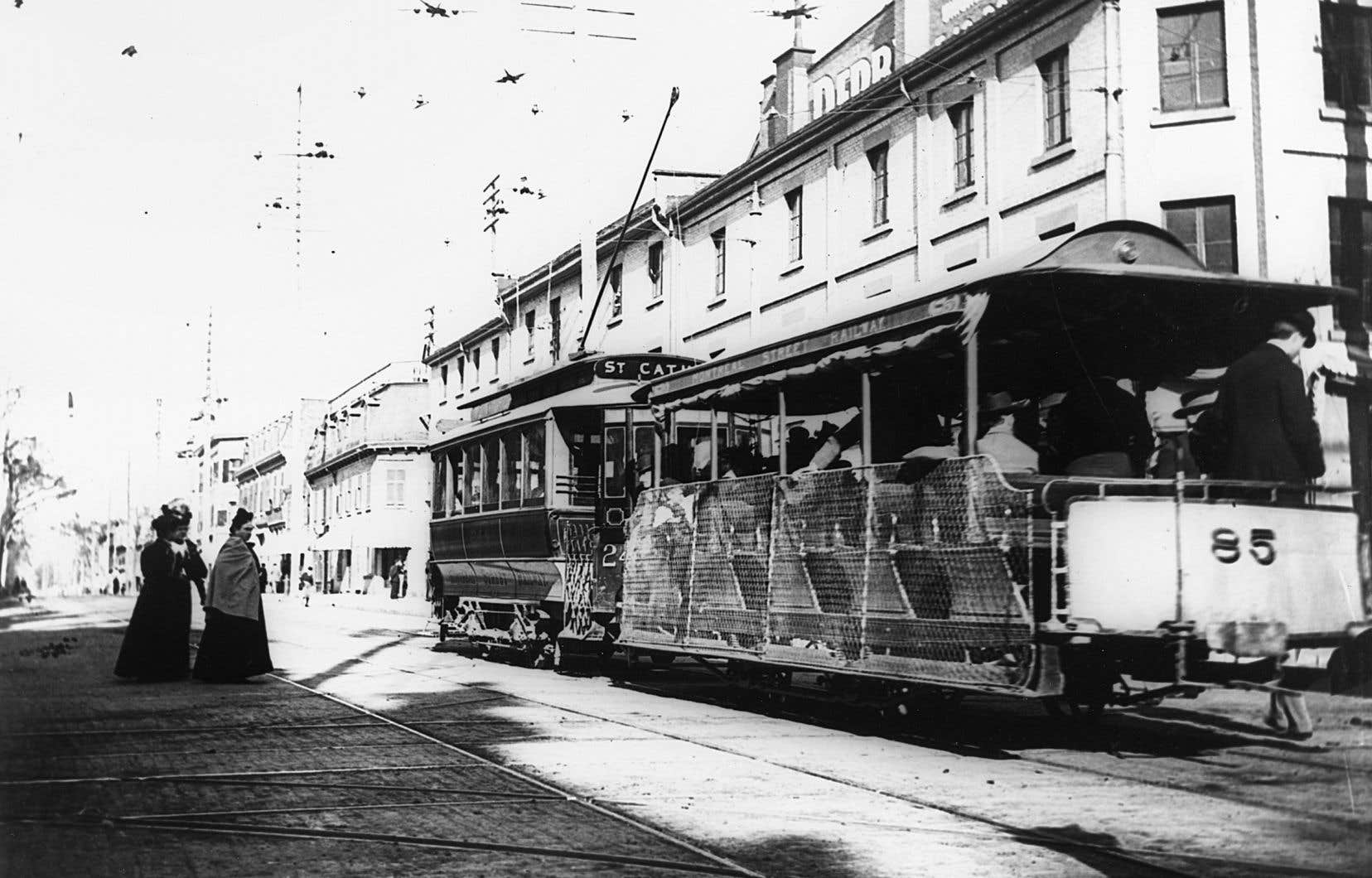Living more sustainably is possible. The last century is full of examples that could now inspire our ecological transition. In his series The Inside Out Story, The duty probes the memory of those who have known this world more sober in energy and resources.
Michèle Stanton-Jean’s father was a civil servant in Quebec. In the 1940s and 1950s, his means of transport were his legs. Every day, he walked the five kilometers between his home, near the Saint-Sacrement hospital, and his place of work. “He even came to have lunch at the house! They were very long walks, and he never took public transport. He was doing this with a friend, ”says his daughter, born in 1937.
At that time, the lives of Quebecers—those in the cities, at least—went largely without cars. They traveled on foot, by bicycle or by tram. Daily life revolved to a greater extent around the home, the neighborhood and local services. The majority of poor families simply could not afford a car.
Even a civil servant like Roger-Henry Stanton, a chartered accountant who had studied at McGill University, did not have enough income to afford a car while supporting his five children. “Under Duplessis, he didn’t have a big salary,” explains his daughter. So he was walking. And, of course, the rest of his family did the same.
“We did everything on foot,” summarizes Mme Stanton-Jean, who lived in Quebec until she was 22, so in 1959. As a child, she walked alone to school. When the wind and snow blew in her face, she went backwards. The sidewalk and the street were not always very well cleared: men cleared them with shovels. They put the snow in “barrels” pulled by horses.
As a teenager, she went by bicycle to Bellevue College, several kilometers from her home, to take her classical course. Mme Stanton-Jean, a historian by training, remembers a city that was more pedestrian-friendly. “There weren’t a lot of cars,” she points out. “Now it’s madness! »
The first means of motorized transport she took in town was the tram. She was going to buy newspapers for her father. And she also jumped on the tram to go to her guide meetings. “I grew up in a carless civilization,” she says.
In his neighborhood of Quebec—the parish of Saints-Martyrs-Canadiens—”the priest didn’t want to have a business.” There were therefore very few local services. M’s motherme Stanton-Jean did his grocery shopping over the phone, “at Monsieur Vachon’s”, who delivered it to his home. She also ordered medication from the pharmacy. To obtain certain goods, such as shoes, the family had to travel to downtown Quebec.
children on the loose
Andrée Lévesque, born in 1939, grew up in Outremont, on the island of Montreal. Her rather well-to-do family owned a car in the 1940s. Her father drove her to work “downtown.” His mother went shopping on foot, especially at Steinberg’s. “We used local services, we walked”, notes Mme Levesque.
In the streets, already at seven years old, she was part of the swarm of children who went to school on their own. “We weren’t alone on the sidewalk,” she recalls. Strength in numbers made the journey safer. At 10, the young girl got on her bicycle and pedaled down the street – without a helmet on her head, of course. “You have to remember that the children were much less supervised. »
This octogenarian remembers residential streets crowded with pedestrians. City dwellers frequently went to large parks, such as Mount Royal, for a walk or a picnic. And in the evening, for lack of being able to watch television, the adults used to go for a walk in their neighborhood. “It’s less visible now,” she says.
The young Andrée Lévesque also walked to go to the cinema. At the time, entry to the “views” was prohibited for people under 16 years of age. (This law stemmed in part from the terrible fire at the Laurier Palace in 1927, which killed 78 children.) “I started going to the movies at 13, putting on lipstick [pour paraître plus vieille]. Well, we were walking. »
“When I started having a boyfriend, we were going to the cinema. We traveled by tram or bus. There was no way he or I owned a car before we got married, it was out of the question. When I started college, none of my friends had a car. Some could perhaps borrow their parents’ car for the weekend, but that was rather exceptional. We traveled everywhere by tram, bus and on foot. »
“My parents never had a car. It was never a problem,” observes Robert McGreggor, born in 1940. His father, a railway worker, never once in his life drove a car. Despite his Scottish surname, the young boy grew up surrounded by his mother’s family, of Italian origin, in Little Italy, in Montreal. With one exception, his uncles didn’t have a car either.
“The interest was at home” at that time, notes Mr. McGreggor. Today, he thinks, people no longer want to spend their free time playing cards. “I remember, every Sunday, when I was little, we would go to dinner with a member of the family, or a group would come to have dinner with us. It was done on foot, we were all in the same neighborhood, avenues Henri-Julien, de Gaspé, rue Saint-Denis… ”
How to go about orchestrating the great return to active and public transport in the cities of Quebec in the XXIe century ? Difficult to abandon the big cars that provide comfort and isolation… “We really have to transform everything, the mentality at the same time as the urban space, believes Mme Levesque. You can’t do one without doing the other. If people want individualistic solutions, they will not be ready to accept collective solutions. »
